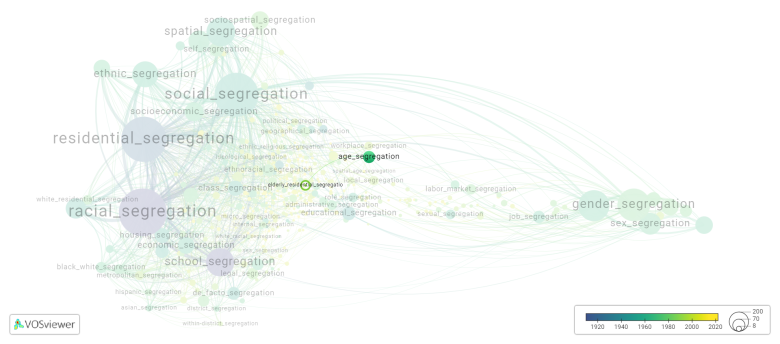Elderly residential segregation: Difference between revisions
(Creating page) |
(Creating page) |
||
| Line 10: | Line 10: | ||
Efforts to address elderly residential segregation may involve promoting intergenerational housing options, creating age-friendly communities that cater to the needs of people of all ages, and implementing policies that promote diversity and inclusion in housing developments. Additionally, providing support services and amenities that encourage older adults to remain in their own homes and communities can help prevent residential segregation based on age. | Efforts to address elderly residential segregation may involve promoting intergenerational housing options, creating age-friendly communities that cater to the needs of people of all ages, and implementing policies that promote diversity and inclusion in housing developments. Additionally, providing support services and amenities that encourage older adults to remain in their own homes and communities can help prevent residential segregation based on age. | ||
==See also== | ==See also== | ||
==Related segregation forms== | |||
Elderly residential segregation is frequently discussed in the literature with the following segregation forms: | |||
[[residential segregation]], [[age segregation]] | |||
[[File:elderly_residential_segregation.png|780x780px]] | |||
For the complete network of associated segregation forms, see: | |||
year of publication https://tinyurl.com/2235lkhw | |||
Louvain clusters https://tinyurl.com/2d8wg5n3 | |||
betweenness centrality https://tinyurl.com/223udk5r | |||
disciplines where segregation forms first appeared https://tinyurl.com/244d8unz | |||
==References== | ==References== | ||
==Notes== | ==Notes== | ||
Revision as of 14:34, 27 September 2024
Date and country of first publication[1]
1998
Canada
Definition
Elderly residential segregation refers to the phenomenon where older adults tend to live in specific neighborhoods or communities with a high concentration of other older adults. This can be due to a variety of factors, including personal preference, financial constraints, accessibility to healthcare services, social connections, and cultural norms.
Some examples of elderly residential segregation include retirement communities, senior apartments, and assisted living facilities that cater specifically to older adults. In some cases, elderly residential segregation can lead to social isolation, limited access to resources and services, and lack of interaction with people of different age groups.
Efforts to address elderly residential segregation may involve promoting intergenerational housing options, creating age-friendly communities that cater to the needs of people of all ages, and implementing policies that promote diversity and inclusion in housing developments. Additionally, providing support services and amenities that encourage older adults to remain in their own homes and communities can help prevent residential segregation based on age.
See also
Related segregation forms
Elderly residential segregation is frequently discussed in the literature with the following segregation forms:
residential segregation, age segregation

For the complete network of associated segregation forms, see:
year of publication https://tinyurl.com/2235lkhw
Louvain clusters https://tinyurl.com/2d8wg5n3
betweenness centrality https://tinyurl.com/223udk5r
disciplines where segregation forms first appeared https://tinyurl.com/244d8unz
References
Notes
- ↑ Date and country of first publication as informed by the Scopus database (December 2023).
At its current state, this definition has been generated by a Large Language Model (LLM) so far without review by an independent researcher or a member of the curating team of segregation experts that keep the Segregation Wiki online. While we strive for accuracy, we cannot guarantee its reliability, completeness and timeliness. Please use this content with caution and verify information as needed. Also, feel free to improve on the definition as you see fit, including the use of references and other informational resources. We value your input in enhancing the quality and accuracy of the definitions of segregation forms collectively offered in the Segregation Wiki ©.
Elderly residential segregation appears in the following literature
Smith G.C. (1998). Change in elderly residential segregation in Canadian metropolitan areas, 1981 91. Canadian Journal on Aging, 17(1), 59-82. Cambridge University Press.https://doi.org/10.1017/S0714980800010357
